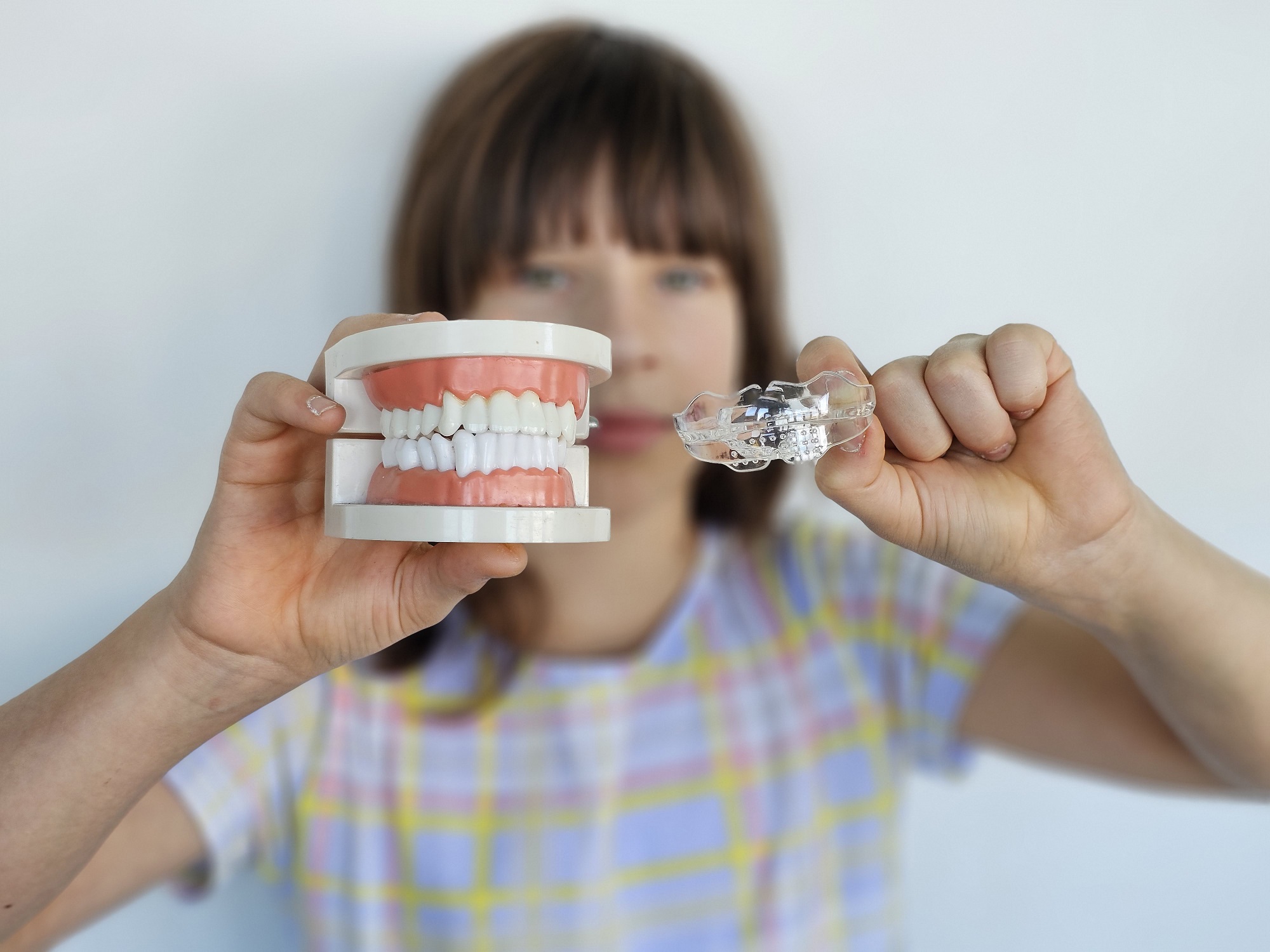
Braces and aligners are orthodontic tools used to correct dental misalignments, bite issues, and jaw irregularities. At Tooth Buddies, we provide a wide range of modern and effective solutions—from traditional braces to advanced aligner systems and surgical orthodontics—tailored for children, teens, and adults. Our treatments are not just about aesthetics, but also focus on function, comfort, and long-term oral health.
At Tooth Buddies, we believe orthodontic treatment is not just about achieving a straighter smile—it’s about building confidence, improving speech, enhancing facial balance, and ensuring long-term dental health. Our team carefully monitors every stage of your treatment journey with advanced digital planning tools and 3D imaging to deliver precise, predictable results. Whether your child needs early intervention or you’re an adult exploring aesthetic options, our clinic offers a supportive, child-friendly environment that prioritizes comfort, safety, and effectiveness.
The most common and durable form of orthodontic treatment, metal braces use stainless steel brackets and wires to move teeth into their ideal positions.
Benefits:
Highly effective for complex cases
Cost-effective and reliable
Offers customization with colored bands
Regular adjustments ensure steady progress
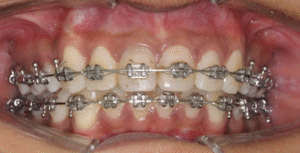
Ceramic braces function like metal braces but use tooth-colored or clear brackets, making them less visible and more aesthetically appealing.
Benefits:
Blends with natural tooth color
Suitable for teens and adults
Corrects moderate to severe misalignments
Offers discreet yet strong results
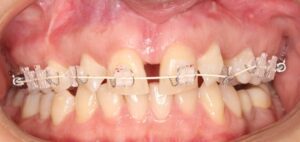
These are transparent, removable trays that gradually move teeth without the need for brackets or wires. Ideal for mild to moderate orthodontic issues.
Benefits:
Nearly invisible and removable
Allows normal eating and brushing
Comfortable with no metal irritation
Suitable for responsible teens and adults
A specialized Invisalign system designed for growing teens with overbites caused by a backward-positioned lower jaw. It combines clear aligners with precision wings that advance the jaw gradually.
Benefits:
Simultaneously aligns teeth and jaw
Discreet and removable
Ideal for teens in growth phase
Comfortable compared to traditional functional appliances
In some severe cases of jaw misalignment (skeletal discrepancies), orthodontics is combined with corrective jaw surgery to achieve optimal bite function and facial harmony.
Benefits:
Treats severe underbites, overbites, and open bites
Improves speech, chewing, and appearance
Custom treatment plans with oral surgeons
Used after growth is complete (typically in older teens or adults)
A subspecialty of orthodontics that manages patients with congenital or acquired craniofacial anomalies, such as cleft lip and palate. Treatment requires close coordination with other medical specialties.
Benefits:
Aligns teeth and jaws affected by birth defects
Prepares for and complements surgical treatments
Improves aesthetics, function, and airway development
Part of a multi-disciplinary cleft care team
Expertise in pediatric and complex orthodontics
Personalized treatment plans using the latest technology
Holistic approach with a focus on facial development and function
Options for all ages: kids, teens, and adults
Self-ligating braces are a type of orthodontic treatment that uses a special mechanism to hold the archwire in place, rather than traditional elastics or metal ties. This design reduces friction and pressure, potentially leading to faster and more comfortable treatment.
Key Differences and Benefits:
Self-ligating braces have a built-in mechanism (a clip or door) that holds the archwire, minimizing friction and allowing for more natural tooth movement.
Less friction and pressure can lead to a more comfortable experience for patients.
Some studies suggest that self-ligating braces may shorten treatment time, although this can vary.
The reduced friction may mean fewer adjustments and appointments with the orthodontist.
Self-ligating braces can be less noticeable, especially with clear or ceramic options.
The absence of elastic bands can make oral hygiene easier to maintain.
Things to Consider:
Self-ligating braces may be slightly more expensive than traditional braces.
There's a possibility of bracket failure due to repeated opening and closing of the mechanism.
Food particles can still become trapped, requiring good oral hygiene practices.
Just like with traditional braces, teeth may revert if retainers are not worn after treatment.
How to Choose:
A consultation with an orthodontist is crucial to determine if self-ligating braces are the right choice for your specific needs and treatment plan.
Consider your personal preferences, lifestyle, and financial situation when making your decision.
In summary, self-ligating braces offer potential benefits like reduced friction, comfort, and shorter treatment times, but it's important to discuss the pros and cons with an orthodontist to determine if they are the best option for your individual needs. 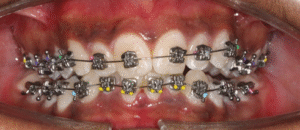
Surgically Assisted Rapid Maxillary Expansion (SARME) is a procedure that combines surgery with orthodontic treatment to widen the upper jaw (maxilla) when it's too narrow
Answer: SARME is a procedure that uses surgery to cut into the maxilla (upper jaw) and then uses orthodontic appliances to gradually expand the jaw, correcting transverse (side-to-side) deficiencies. It's typically used when the maxilla is severely narrow, or when rapid maxillary expansion (RME) alone is not sufficient. It's often considered for adults or for patients where conventional RME might not be feasible.
Answer: SARME involves surgically cutting into the bone of the maxilla, typically in the palatal area (roof of the mouth). Then, an appliance (often a Hyrax device) is used to gently apply pressure, causing the maxilla to widen. The surgery is typically done under general anesthesia, and the patient's healing process is monitored closely.
Answer: SARME can correct transverse maxillary deficiencies, improve facial aesthetics, and enhance bite alignment. It can also alleviate issues with speech, breathing, and chewing, and provide a more functional and aesthetically pleasing smile.
Answer: While SARME is generally a safe procedure, potential risks include: swelling, pain, bleeding, nerve damage, and infection. In some cases, there could be relapse of the expansion, requiring further treatment or retention. It's essential to discuss all potential risks with your surgeon and orthodontist before proceeding with SARME.
Answer: The initial healing process typically takes a few weeks, with some pain and swelling that can be managed with medication. Full recovery may take several months, and the jawbone will need time to stabilize. Patients will need to follow specific instructions regarding diet, hygiene, and activity restrictions to ensure proper healing.
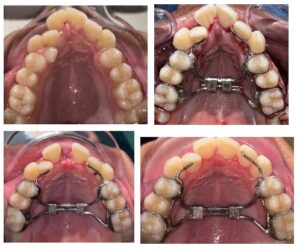
Aligners are transparent, removable plastic trays used to straighten teeth and correct bite issues, serving as a discreet alternative to traditional metal braces. They are custom-made to fit each patient's teeth and work by gently applying pressure to gradually move teeth into their desired positions.
Here's a more detailed look at aligners:
Aligners are thin, clear, custom-fitted trays that fit over your teeth.
They gradually shift teeth into alignment using a series of aligners, each worn for a certain period of 10-14 days.
They are suitable for a range of cases, including crooked, crowded, or gapped teeth, and bite issues like overbites and underbites. Appointments are widely spaced, and this option is excellent for those who travel frequently and may not have access to orthodontic appointments frequently. Tracking of aligners wear needs to be self monitored and it’s a highly motivated patient who can go for this option.
They offer a discreet and removable option compared to traditional braces, allowing for easier eating, brushing, and flossing.
The treatment involves wearing a series of aligners, each designed to move teeth a small amount over time. The treatment may range from 6 months to 5 years depending on the complexity. Aligners can also be integrated with jaw expansion and jaw surgery devices as a part of the treatment plan.
While they are effective for many cases, their effectiveness can vary depending on the severity of the misalignment , individual patient factors and usage for the recommended time of 20 to 22 hours per day.
The cost of aligners can be higher than traditional braces, but this is due to the advanced technology and customization involved. Aligners are CAD-CAM designed and printed with high quality smart-track and shape memory materials which deliver the results with recommended usage. Compromise in quality is a compromise in results.
Remember that you are paying for quality.
Aligners are considered as a part of cosmetic dentistry and currently not covered under any insurance plans in India.
Credit cards offer EMIs for treatment.
The initial fee is a small retainer for the 3D intraoral scan and treatment planning. This is a non-refundable fee, but a part of it is absorbed as a part of the treatment fee.The treatment plan will give the number of aligners, duration, cost, and scope for refinement over a follow up duration of 3 to 5 years.
Once approved, about 70% of the fee needs to be paid before manufacture and the remaining may be paid before completion of treatment.
The fee for retainers is not included as a part of aligner orthodontics.

INVISALIGN WITH MANDIBULAR ADVANCEMENT
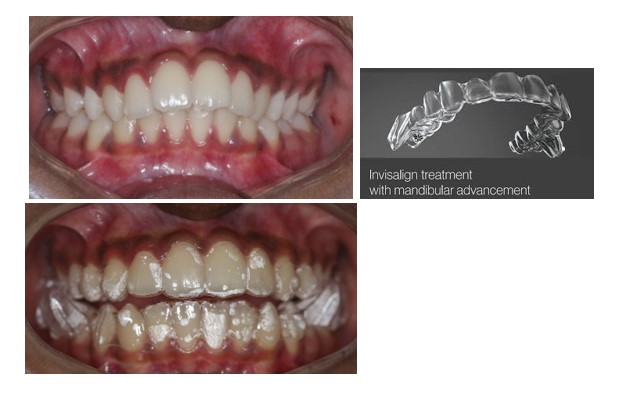
ORTHODONTICS WITH JAW SURGERIES-
Before After Images-
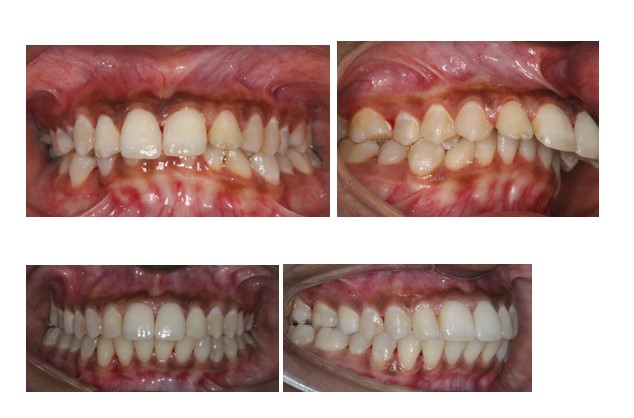
Craniofacial orthodontics focuses on treating individuals with birth defects like cleft lip and palate, or other jaw and face abnormalities. It's a subspecialty of orthodontics that requires additional training and experience. Craniofacial orthodontists and pediatric dentists work as part of a multidisciplinary team to address the complex issues associated with these conditions.
Here's a more detailed look at some frequently asked questions:
This can involve braces, headgear, and other oral appliances to correct tooth alignment and jaw position.
Craniofacial orthodontists play a crucial role in preparing patients for jaw surgery and ensuring proper healing and alignment afterwards.
They work closely with surgeons, speech therapists, and other healthcare professionals to provide comprehensive care.
They assess the patient's condition, develop a treatment plan, and monitor growth and development.
They may use braces, headgear, or other devices to guide tooth and jaw development.
They track progress, make adjustments to treatment as needed, and provide long-term support.
Orthodontic treatment can correct tooth alignment, improve jaw function, and enhance facial symmetry.
Correcting jaw and tooth alignment can help improve speech clarity and swallowing function.
Addressing craniofacial anomalies can boost self-confidence and improve overall quality of life.
At Toothbuddies, Dr. Gayatri Moghe and Dr. Asadullah Khan have had subspecialty training and more than 15 years of experience working with children and adults having cleft lip palate and craniofacial anomalies. We collaborate with plastic surgery teams to ensure the best result of combined care both functionally and cosmetically.
Our forte lies in comprehensive dental solutions for craniofacial anomalies, all under one roof!
BEFORE BRACES AND JAW SURGERY
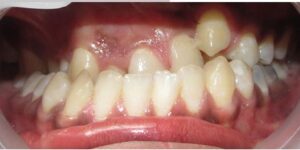
PRESURGERY
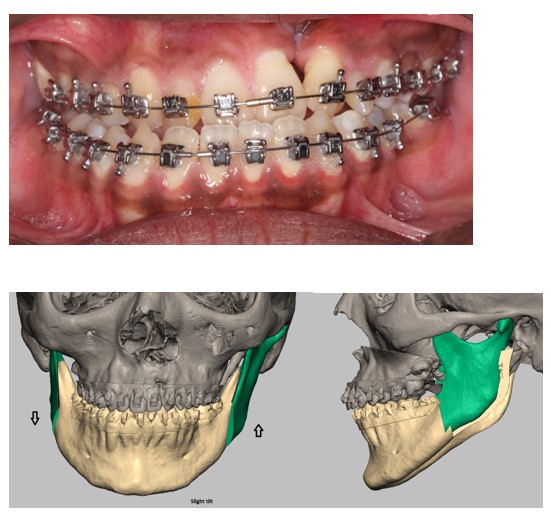
AFTER SURGERY AND REMOVAL OF BRACES
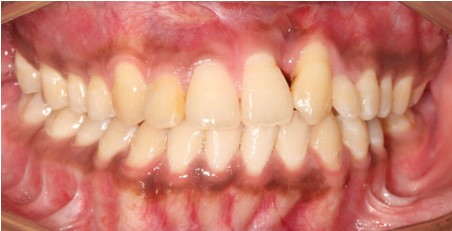
Tooth Buddies delivers quality dentistry with a personalized touch. Each patient is treated with the utmost care, compassion, empathy.
Copyright © 2025 All Rights Reserved.